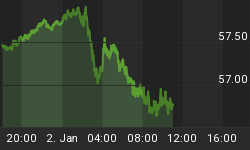
The quantity theory of money and its accompanying equation of exchange are generally accepted as defining the relationship between money and prices. The equation has been expressed a number of ways, always including "velocity of circulation", which is a variable essential to balance the equation.
Few disagree with the simple premise that an increase in the quantity of money tends to increase prices; the mistake is to try to tie the relationship mathematically, because it rides roughshod over what actually happens. Not all prices rise at the same time, nor do they rise evenly. Furthermore, the equation of exchange cannot differentiate between price changes that emanate from demand for goods and those that emanate from changes in preference for money - two effects that can produce very different results. These unknowns are effectively wrapped up in that catch-all, velocity of circulation.
Aprioristic theory tells us where the error lies. People make a choice to allocate their income between current consumption and savings for the future. The most they can do without incurring debt is spend their earnings once. In practice most income is spent on consumption, but some is put aside for savings, and those savings are lent on through financial intermediaries to businesses for investment. Savings end up being spent on capital goods and working capital, instead of immediate consumption, but they are still spent.
If there is an increase in the quantity of money it is spent by those that first obtain it, but the same rule applies: they can only spend their money once. How that increase is spent determines which prices will tend to rise. Furthermore demand for goods can change as the quantity of currency and bank credit changes and consumers can also change their preference for money by hoarding or dishoarding only marginal amounts of cash. It is these factors that govern the relationship between money and prices. Therefore, the number of times a unit of account circulates over a given time is a red herring.
The fallacies behind the equation of exchange are more fully exposed in the case of a fiat currency, which unlike gold has no intrinsic value at all. What it will buy is set by its domestic acceptability as a money substitute amongst those that use it for transactions, and by its external value in the foreign exchanges set by those that don't. Its purchasing power boils down to a matter of confidence and nothing else; therefore velocity is meaningless.
Consider the Icelandic krona's dramatic fall in purchasing power in October 2008. According to the equation of exchange, the sharp increase in domestic prices that followed must be the result of an expansion in the quantity of money and/or an acceleration of velocity of circulation. What actually happened was simply a collapse in the purchasing power of the krona that originated in the markets, which had nothing to do with any monetary equation.
Velocity is an invention by economists to balance an equation conjured out of their own imagination, instead of understanding that the purchasing power of today's fiat currencies is governed solely by the confidence placed in them. And because they have no intrinsic value, the quantity theory itself is a wholly inadequate explanation of the relationship between fiat money and prices.
















